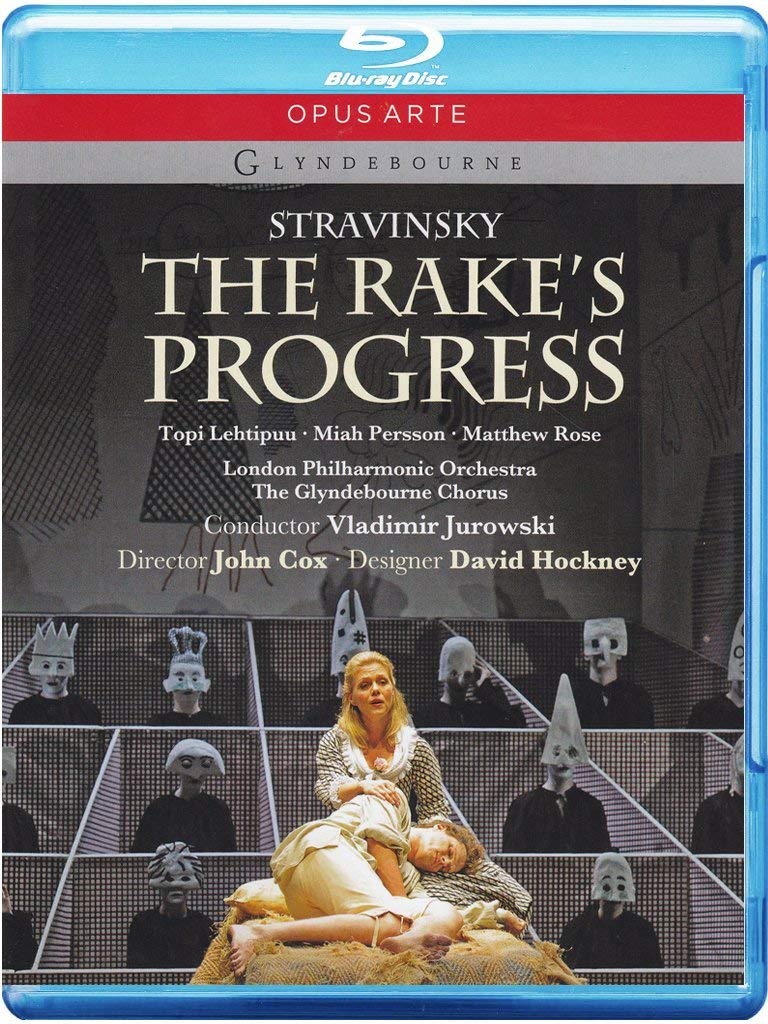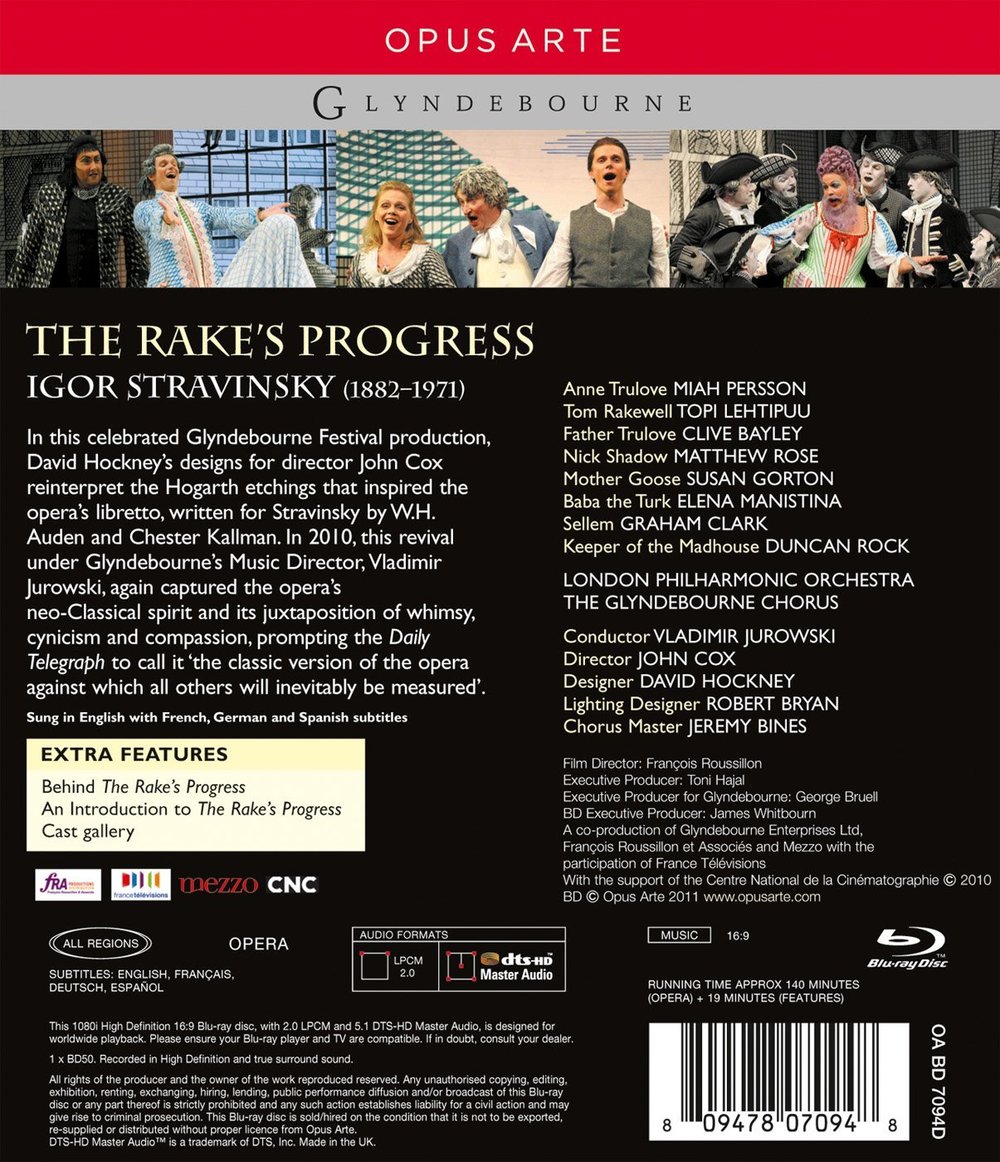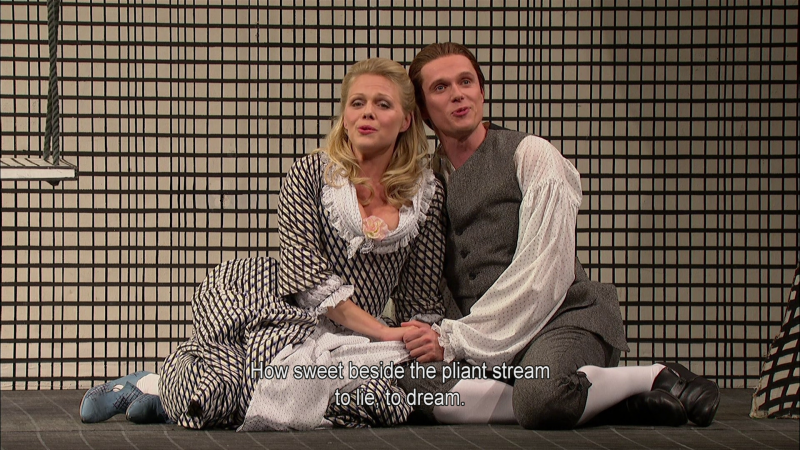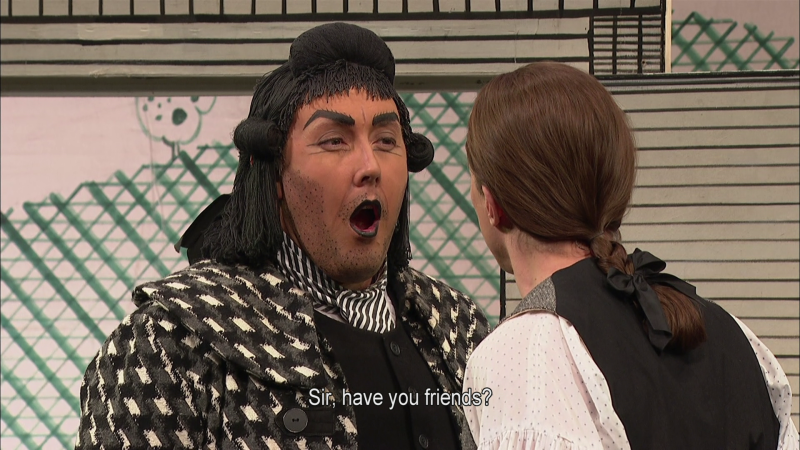

Igor Stravinsky The Rake's Progress opera to libretto by W. H. Auden and Chester Kallman. Directed 2010 by John Cox at Glyndebourne. Stars Miah Persson (Anne Trulove), Topi Lehtipuu (Tom Rakewell), Clive Bayley (Father Trulove), Matthew Rose (Nick Shadow), Susan Gorton (Mother Goose), Elena Manistina (Baba the Turk), Graham Clark (Sellem), and Duncan Rock (Keeper of the Madhouse). Vladimir Jurowski conducts the London Philharmonic Orchestra (leader Pieter Schoeman) and the Glyndebourne Chorus (chorus master Jeremy Bines). Designs by David Hockney; lighting design by Robert Bryan. Directed for TV by François Roussillon; produced by Toni Hajal. Sung in English. Released 2011, disc has 5.1 dts-HD Master Audio sound. Grade: B
Richard Fairman wrote an interesting review of the DVD version of this title. Alas, he apparently is in a fog as to what is going on. He compares this DVD to the Opus Arte DVD of the 2007 La Monnaie production of Rake's Progress (OA0991D). What Fairman didn't know was that both the subject of his review and his comparison title have been recently reissued in Blu-ray versions that are superior to the old DVDs. If you are interested in HD recordings of fine-art titles, you can't rely on what you might read in print in even the most famous magazines. The reviewers and their editors are too mired in the past to be relied upon by us.
For bit more information about this opera, please visit our story on the La Monnaie Rake's Progress. Subject version from Glyndebourne was originally directed by John Cox in 1975 with designs for the sets, props, and costumes from David Hockney: this is considered an iconic modern opera production. Subject title was filmed in 2010 when the 1975 show was revived; it is apparently so close to the original that nobody deserved an credit for reviving anything.
The two best things about this 2010 revival are the (1) strong lead singers, Miah Persson playing Anne Truelove and Topi Lehtipuu playing Tom Rakewell and (2) the David Hockney designs. The weaknesses in the production are (1) shallowness in the development of the other characters and (2) the David Hockney designs.
Why are Hockney's designs both the strongest and weakest aspects of this production? Well, if you already love what Hockney came up with or you fall in love with it now, you will revere it as one of the more original and distinguished mise-en-scène efforts of our time. On the other hand you might find the design unpleasant due to its ruthless uniformity or stifling because its precious approach overwhelms everything else including the acting and singing of the cast. There is not much middle ground. You have to get used to all the Hockney fussiness or find something else to do. Let me give you a few design examples you can compare the the Lepage approach at La Monnaie.
Tom Rakewell and Anne Truelove are sweethearts in a story book world:
Who the devil is this?
Tom's apartment in London:
One clever variation in design is to use black and white for the auction scene:
But even in a black and white world, there are some colorful characters:
Tom in Bedlam:
These few screen shots don't tell you much about the story, but they give you a good idea how this production looks. You can compare these shots to our screen shots for the Monnaie show and see if this will help you pick the better title. In any event, I should say that TV director François Roussillon did a brilliant job of capturing all the repetitive and fine detail in the Hockney designs without allowing video artifacts such as Moiré patterns and jagged lines. Shooting the Hockney set in HD must have been a challenge.
I personally prefer the La Monnaie title over the Glydebourne approach because I think Lepage tells the story better. But the Hockney design is also an impressive achievement, and I give subject title a B grade. For an opera to get an A grade, all the elements must be equally fine and support each other in a seamless manner.
In the January, 2013 Opera News (page 59) this Rake's Progress was praised as a "2012 Best of the Year" title.
OR






